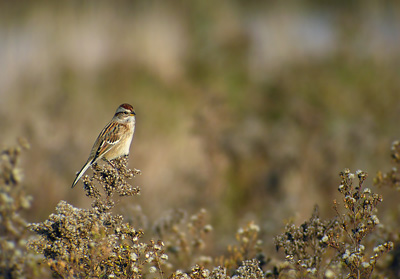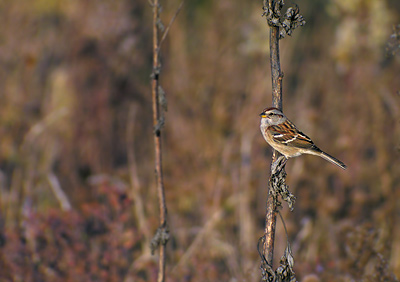
American Tree Sparrow
We've reached the end of another beautiful October. Through winter, I'll probably carry my digiscoping gear less often when I go birding at Pheasant Branch Conservancy. I love fall, but its spectacular color and birds pass on too soon. October is one of my most productive photography and digiscoping months for several key reasons:
- Fewer people on trails reduce disruptions.
- The mosquito population decreases to nil.
- Less air turbulence translates to sharper images.
- Decreasing foliage offers more open perches.
- Available subjects (namely sparrows) are fairly cooperative.
I enjoy watching and photographing sparrows almost as much as I do showy spring warblers and other neotropical migrants. I think a knack for identifying sparrows is accelerated through photographing them; a systematic process of collecting different sparrow species images. Skilled bird identification takes a lot of time and patience, but if you dedicate yourself to diligent study, you'll even be able to identify them by call note and flight. From the low bouncy-bounce of the Song Sparrow, to the finch-like zippiness of tree sparrows, each has elements of uniqueness to their flight that can be used to help identify them.

American Tree Sparrow © 2008 Mike McDowell

















